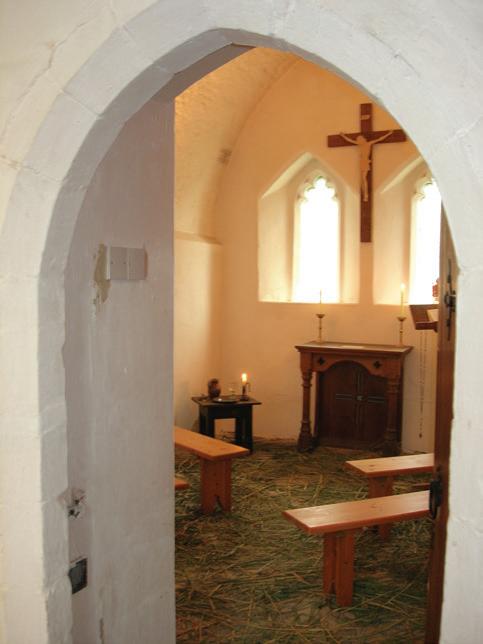
5 minute read
Taste Buds
from Village Tribune 136
from the kitchen of
For each: 2 or 3 large free-range eggs, beaten, 1 tsp sunflower oil, 1 tsp salted butter.
Advertisement
Omelette du Menu Maison
Ah, again I hope you are all well in your villages. This issue I am reminding you what I have often said here that French cooking is mostly very simple fare, relying on the quality of the ingredients used. One such world-renowned yet simple creation is of course the French omelette.
So easy to create but to be exceptional will require very fresh free-range eggs, salted butter and single cream. Omelette is a French word (spelt ‘omelet’ by Americans for some reason) and was first officially used in a French middle classes’ home cooking publication, Cuisine Bourgeoise in the late 17th century, although the word 'alumete' was used as early as the 14th century. My well-loved early edition of ‘Larousse Gastronomique’ lists 114 varieties of omelette and 70 in my Escoffier’s ‘Ma Cuisine’ but the most notable in the world is most likely the Omelette de la mère Poulard, a specialty first developed in a small inn on the tidal island Mont-Saint-Michel, in Normandy. This was originated by Annette Poulard in 1888

Season the well beaten eggs with salt and pepper and a splash of single cream during beating. Heat the oil and move the butter over all the nonstick frying pan over a medium-low heat until the butter has melted and is foaming. Pour the egg mix into the pan, tilt the pan slightly from one side to another to allow the eggs to swirl and cover the surface of the pan completely. Let the mixture cook for about 20 seconds then scrape a line through the middle with a spatula. Tilt the pan again to allow it to fill back up with the runny egg. Repeat once or twice more until the egg has just set. At this point you can fill the omelette on one side with the mushrooms, ham and grated gruyère and fold gently in half with the spatula. After a minute or so to heat through slide onto a warm white plate to serve. Easy and satisfying, cheap to make and good looking to serve, non?
Omelette du Menu Maison
when she opened La Mère Poulard, on this now much-visited tourist destination. But in those days she catered for the local workers and peasants, so Mme Poulard devised her particular variety of omelette as a huge 15cm thick mass that she sold in individual slices to passing customers who came and went with the tide, creating in France the first ‘fast food’. The old photo shows such a creation, proudly displayed by one of her cooking ladies on the right. Nearly 100 years after she died aged 80 her inn and restaurant are still running but not progressing it seems, as they have not very good reviews always from patrons now and the prices charged, at 34€ for one small plain omelette, waters my eye not my mouth! At Chez Pierre we have always our very good value house menu omelette which I have created over the years to much appreciation by our friends and guests. Many housewives shy away from creating this dish but it really is very easy and simple to get a good result. My standard is presented with sautéed sliced mushrooms and gruyère cheese, often with thin strips of Bayonne ham too if desired. I serve with a dressed green salad for light lunches or often parmentier potatoes and asparagus for informal suppers. One omelette for each guest. I will sauté enough sliced seasoned mushrooms and ham for however many guests I have in total and, once sautéed, put aside and keep warm.

Andy Staines

Glinton Climate Change Action Group
In just 8 short years time, new fossil-fuelled cars will no longer be available. There will, no doubt, be a pre-ban rush of sales and a thriving second-hand market after that. But we would urge anyone considering a new car to opt now for an electric vehicle (EV).
In 2016 when I bought my first hybrid VW Golf I felt like a pioneer although I saw one or two Nissan Leafs in the village. Now I see a growing and welcome number of EVs up our side roads and more people are discovering the advantages - especially if coupled with a home charger. The current cost is, of course, a major problem for many. They are more expensive. But EV prices are coming down and will tumble faster as sales grow and 2030 approaches. In general, costs are already significantly lower than when I started on this journey and there are quite a few more affordable ‘city’ styled cars if you mainly travel locally and to places of work. In my view a home charger is a must and I have often seen chargers being offered at a good discount when buying a new EV which is definitely worth the extra outlay. ‘Range Anxiety’ is a common worry but is fast becoming a thing of the past - I am getting over mine! My Hyundai Kona gives me about 290 miles when fully charged, and while a few short years ago our area was poorly served by public charging points, a quick look at zap-map.com shows significant local growth. My nearest public fast charger, should I need it, is just 1.6 miles away from Glinton. And this rapid growth is happening country wide.
Having signed up to a special EV tariff with Octopus Energy - I can add just over 100 miles of range in the 4 hours a night when I am charged just 5p per kWh. Total cost for that 100+ miles? Just short of £2. Compare that to current pump prices! And all with zero emissions and, at least at the moment, no road tax!










